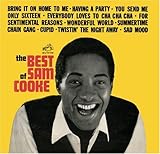Have you heard? DTV is coming!
You may not have heard, but next February most analog NTSC television broadcasts are being discontinued and replaced by digital ones. According to the FCC countdown clock, it’s only 109 days away.
Of course, I’m being sarcastic. You’d have to be under a rock not to have heard about the switch, which where we live has made it into the newspaper and also been the subject of a test shutoff. Most of all, it has been been the subject of daily PSAs (“public service announcements”) on all the local TV channels, including PBS. My wife and I wonder who wouldn’t have heard about it. Perhaps people who don’t watch TV. (If so, why would they care?) This really gives new meaning to the word overkill.
Even the Federal Communications Commission is joining in the overkill. Apparently having a comprehensive DTV website for several years isn’t enough, since the FCC decided to engage in an unconventional form of government sponsorship. As a trade magazine reported last week:
Federal Communications Commission chairman Kevin Martin on Thursday was named Porker of the Month by Citizens Against Government Waste for using taxpayer money to sponsor a NASCAR driver from North Carolina, Martin's home state.The NAB (the main lobbying group for local TV stations) budgeted $700m for its ad campaign to make consumers aware of the DTV switch, including $327m on PSAs. While the NAB had a big push to members earlier in the year — including a major emphasis at its April tradeshow — apparently since June it has not felt it necessary to update them with any new information.
"For using taxpayer funds on an unnecessary project, diverting focus from more important telecommunications concerns, recklessly spending without consulting with his peers and attempting to use his influence to shore up his own political prospects, CAGW names FCC Chairman Kevin Martin its October 2008 Porker of the Month," CAGW said in a press release.
Last week, Martin announced that the FCC would pay $355,000 to sponsor stock car racer David Gilliland's No. 38 car, owned by Yates Racing, in three races to raise public awareness about the Feb. 17, 2009 switch to digital TV.
Gilliland's Ford crashed near the end of last Sunday's Sprint Cup race in Martinsville, Va.
“Even though the [FCC] has inundated networks with paid announcements for months, Martin considered it necessary to use additional taxpayer dollars to pay for the car and driver to bear slogans such as ‘Is Your TV ready for Digital?’” CAGW said. “While spreading public awareness over the transition from analog to digital broadcasting is important, the National Association of Broadcasters has stated that the public is already largely aware of the switch."
Even PBS is joining in the propaganda act. The same PBS that is supposedly interested in public service, consumers, and all that is fair and good.
Wednesday night on the Boston PBS station, WGBH, I saw a locally produced special issue of “This Old House” on the subject of the DTV conversion, with their regular hosts Kevin O'Connor and Norm Abram. (This is over and above all the one-minute PSAs the two men have been doing for months). The two were joined by another PBS host, Maria Hinojosa, for a one hour “how to” show on converting to DTV.
In the episode, the two men wandered through one neighborhood, handing out Zenith® brand converter boxes† like the tooth fairy. They also gave a woman a new compact DTV to replace the analog TV in her kitchen. Try getting that deal in your neighborhood!
(† This is the box I bought myself at my local RadioShack using the $40 FCC rebate).
The show — as with their regular PSAs — shows the same pro-adoption bias as the commercial networks have shown. One host said “Digital television has several advantages over analog.” There was no suggestion that spending money to switch to DTV is a waste of money to pay an additional charge to get what you have now.
Don’t get me wrong. The FCC had to move broadcasters off their analog channels to reclaim the old channels and sell them to other companies. (The broadcasters got an unusual sweetheart deal of keeping their old channels for several years after they got their new digital channels). The change has already happened in North Carolina. However, every issue has two sides, and you will never ever hear on TV any disadvantages of the switch.
What’s the big (frankly) deal? If you turn on your TV on Feb. 17 and there’s no signal, then you’ll know that all those warnings for year were real and that you will actually have to do something. (Of course, as O’Connor and Abram helpfully explained, it doesn’t apply if you have cable or dish). So at worst, you lose a day or two of TV viewing until you fix it.
After puzzling over this blatant over-exposure, I came up with two possible explanations. One is that even a small percentage of complaints of the 113 million US TV households will generate a tech support and PR nightmare for the FCC and local stations. Apparently the decision to shut off analog early (as a test) in Wilmington, NC generated an unexpectedly high number of calls.
The other possible explanation is that the TV stations are terrified of losing their customers. Anything that forces customers to re-evaluate may have them not come back. I could see it if it were teenagers losing their signal — and perhaps switching to Hulu, GooTube or the iTunes Store. However, I suspect people who can’t figure out how to install a DTV converter box aren’t watching online videos using a Flash® enabled web browser.








![[feed]](http://photos1.blogger.com/x/blogger2/6971/993546936938810/1600/z/962294/gse_multipart3851.gif)
